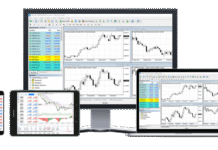As an ecommerce entrepreneur, you know how back-end logistics figure into setting prices. Meanwhile, your customers only see the final price tag before they have to make a purchasing decision. This means shoppers must often decide if an item is worth the cost, without having a firm grasp on influential background factors.
What if you could clue would-be customers in on the behind the scenes activities dictating the price of certain products? You just might be able to make a more compelling case for a sale. Such is the power of cost transparency in ecommerce. Here’s how you can use it to your advantage when you’re establishing and running your online store.
Some pricing models are straightforward; others are based on less tangible variables. An example of the former would be cost-plus pricing, which entails marking up the wholesale cost of an item to achieve a desired sales margin. Let’s say you want to sell novelty socks through your ecommerce store. Each pair costs you $3 to obtain from the manufacturer and $2 to ship domestically. Thus, your cost is $5. In order to turn a profit and support your store’s overhead costs, you decide to add a $4 margin, meaning you’ll have to charge at least $9 per pair to make it work.
However, basing your pricing strategy on cost alone may undercut your profits or overcharge your customers. That’s where value-based pricing comes in. This model takes into account more complex factors like:
- Your customers’ reasons for buying
- The most important features/attributes of your products
- The importance of price in reaching a purchasing decision
Part of pricing products based upon perceived value is identifying and leveraging your company’s unique selling proposition (USP), also known as the “it factor”, which sets it apart from other brands. Online stores often find their USP relates directly to the products they sell. Understanding the exact appeal your products have to your customers and how much they’re willing to pay (and then creating a highly usable website with these prices clearly on display) is key when you’re deciding how to make an ecommerce website.
For instance, a t-shirt may look like a t-shirt from the outside. But not all “simple” garments are created equally. Do you sell shirts made from basic cotton or recycled polyester? Are your t-shirts sourced from international factories or are they made domestically? Is there a philanthropic angle to your t-shirt company (like donating one shirt to a worthy cause for every five purchased by customers)? Are your t-shirts plain, patterned, embroidered or emblazoned with a hip brand logo? All of these factors influence how much your customer will consider paying for such a garment.
Cost transparency, then, is one way to help customers understand your pricing models (and convince them it’s worthwhile to shell out X amount for your products). For instance, you could explicitly break down the assembly, labor and transportation costs for each product so customers see how much work went into getting it ready. After all, nothing materializes for free out of thin air. This practice boosts “intimate disclosure” with the customer and heightens their sense of trust toward your brand.
If you decide to be transparent about costs on your web store, you may also choose to offer shoppers a brief explanation. If you sell luxury leather goods, justify the higher labor costs by pointing out your pieces are hand-stitched and one-of-a-kind. If your products are among the cheapest on the market within your industry, explain how you streamlined your production process and passed the savings on to the customer so they do not assume you’re cutting corners to undercut competitors. Shoppers tend to appreciate any honest information you can provide.
Without a doubt, the power of cost transparency in ecommerce is mighty. Make sure your brand uses it to set fair, appealing prices for customers and communicate more honestly with visitors to your website.



